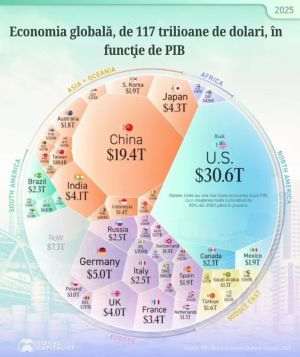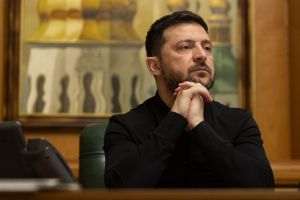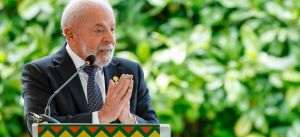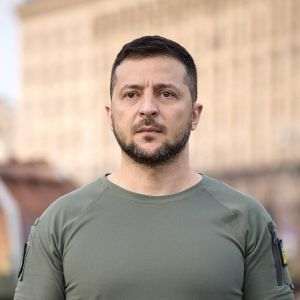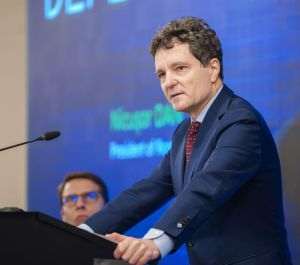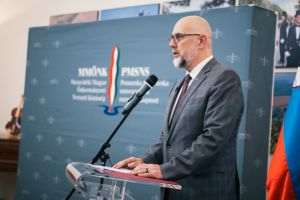Donald Trump's program for NATO reform, should he become US president again in the fall, is based on two elements: a minimal American presence in Europe and support given only to allied states that allocate at least 2% of their GDP to defense, according to an analysis published by Politico.eu.
Former officials of the Trump administration, from his first term in the White House, and experts around the Republican presidential candidate in the US claim for the quoted source that, in exchange for the continued participation of the US in NATO, European countries should significantly increase their spending for defense and to have a larger recruitment base and a modern defense industry. According to these officials, the US would retain its nuclear umbrella over Europe during a second Trump term, maintaining its air power and bases in Germany, England and Turkey, as well as its naval forces. Meanwhile, most of the infantry, military equipment, logistics, and artillery would eventually pass from American to European hands. That change involves "significantly and substantially reducing America's security role: to withdraw instead of being the main provider of combat power in Europe, to be someone who provides support only in times of crisis," he said, according to the quoted source. , Dan Caldwell, a former senior adviser to Russell Vought, a former senior Trump administration official who in May was named policy director for the Republican National Convention and is expected to play a leadership role in a second Trump administration .
The authors of the analysis published by the cited source also show that another part of Donald Trump's plan refers to a two-tier NATO system, an idea proposed by another former official during the first term in the White House, retired General Keith Kellogg. This system means that member countries that have not yet met their target of spending 2 percent of GDP on defense "would not enjoy the defense and security guarantee of the United States," according to a national security expert, according to the source cited . This could be seen as contradicting Article 5 of NATO's common defense treaty, which obliges each allied member to take "such action as it deems necessary" to help anyone under attack. But members of Donald Trump's foreign policy trust noted that the language in Article 5 is flexible and does not require any member to respond with military force.
A quick resolution to the conflict in Ukraine would also play a key role in Trump's plans for NATO. As part of a previously unreported plan for Ukraine, the Republican White House nominee is mulling an agreement in which NATO commits not to expand further eastward - specifically into Ukraine and Georgia - and is negotiating with Russian President Vladimir Putin how much Moscow can keep of the captured Ukrainian territory, according to two other national security experts cited by the source.
Altogether, Trump's new approach in these areas would amount to a revolution in NATO-one that many critics say Europe is completely incapable of achieving in the near future.
The US is by far the largest contributor to NATO operations, spending about $860 billion on defense, which accounted for 68% of total spending by NATO countries in 2023. This is more than 10 times the allocation of Germany, which is the largest contributor after the US. A substantial portion of U.S. spending, amounting to about 3.5 percent of U.S. GDP, goes to the defense of Europe, although the Pentagon refuses to publicly disclose how much, Jeremy Shapiro, director of research for the Council, told the source. European for External Relations.
Meeting with President Joe Biden in Washington in early June, acting NATO Secretary General Jens Stoltenberg announced that 23 of NATO's 31 non-US members will only reach the 2024 allocation target % of GDP. However, Boris Pistorius, Germany's defense minister would like his country to allocate 3.5% of GDP to defence. But even if Germany reaches that point, some former defense officials in Donald Trump's camp say it's not enough.
Elbridge Colby, former deputy defense secretary during Trump's first term in the White House, said: "I'm in favor of supporting the North Atlantic Treaty Organization, but I think the only way to do that - and I say this all the time to the Europeans - it is for them to shoulder much more of the burden. We can no longer do 10 times as much as the Germans do and we have to be ready to be hard on them. There must be consequences. We want NATO to be active, but we want it to be with the Europeans in the lead. That was the original idea. That was Dwight Eisenhower's idea."
The former US official stated that, given the provocations from China, the US cannot afford to concentrate most of its military forces in Europe against the Russians, because "the Chinese are a more dangerous and significant threat."
The analysis published by Politico also shows that experts in the Trump camp are mostly focused on the issue of spending, wanting European countries to spend more and shoulder much more of the military burden. Kiron Skinner, Donald Trump's former chief of political planning, said: "We have to right-size the role of the US in the world in the 21st century, and that's what I think it's all about. The US is not the world's ATM. NATO has a significant contribution to make in the Atlantic theater and in the Indo-Pacific theater, but we need to do more strategic thinking on both sides."
The quoted source also says that the first test of Trump's intentions regarding NATO, should he win another term as US president, would be how he handles the war started by Russia in Ukraine. The US has stepped up its central role in NATO since the start of the Ukraine war, sending 20,000 additional troops to Europe (bringing the total US military presence on the continent to 100,000) in addition to new air, land, sea, cyber capabilities and spatial. According to national security experts in Trump's camp, he could strike a deal with Putin on which countries could join NATO, particularly Ukraine and Georgia. Such a plan would destroy NATO's vague promise of future membership for Ukraine, which would be pressured by the incoming US president to cede Crimea and the Donbas region to Russia.
"I would expect a very quick deal to end the conflict," Kevin Roberts, president of The Heritage Foundation, an influential think tank in Donald Trump's camp, told the source.
Donald Trump has yet to publicly outline plans for Ukraine, but during the election campaign he repeatedly promised to end the war as one of his first tasks - "before I even get to the Oval Office, shortly after we win the presidency" , according to his statement at the June 22 rally in Philadelphia.
The cited source also notes that a major problem with Trump's approach to NATO could be that European nations are clearly not ready for an expanded military role. American experts say European leaders do not know how to replace the US military presence in Europe, especially as French President Emmanuel Macron's efforts for greater independence from the US defense umbrella have failed.
Military experts in Donald Trump's camp also say, according to the quoted source, that the Europeans need to develop cross-border defense industries, rather than national ones, to increase efficiency and capacity and to fulfill their commitment to greatly expand the response force rapidly from 40,000 to approximately 300,000 troops.
They conclude that if European allies spend 2% of their GDP on defense, then Trump will fully respect the US's commitment to the defense of the old continent, but it is possible that, if elected, the Republican candidate for the White House will request the allocation of a higher percentage. In other words, the future of NATO and Europe will depend on the response that the allied states provide to the above requirements.

